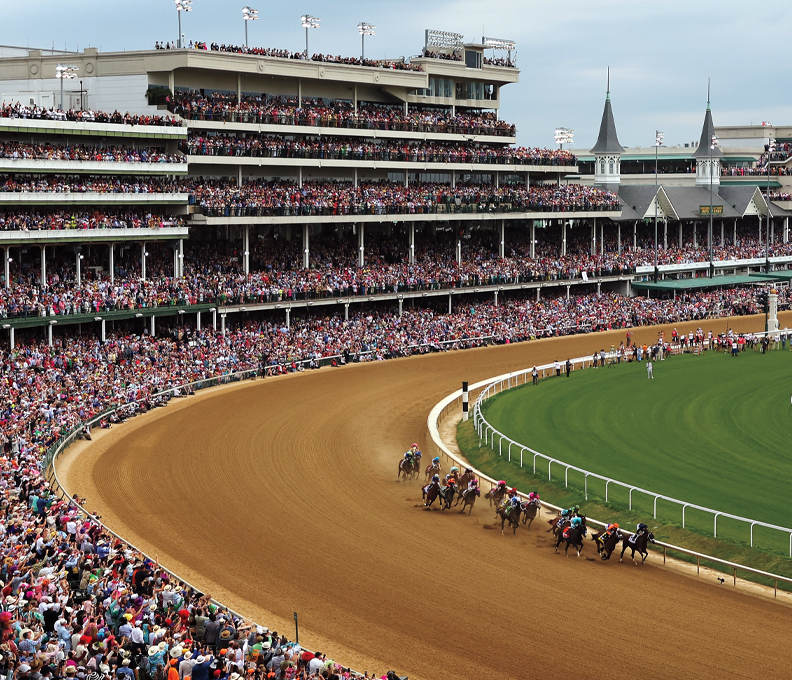How Vegas Residencies Became a Billion-Dollar Business
A fresh wave of artists and residencies has come to include Lady Gaga, Usher, Adele, Bruno Mars and Anderson.Paak, Maroon 5, Kelly Clarkson and Katy Perry
August 4, 2023
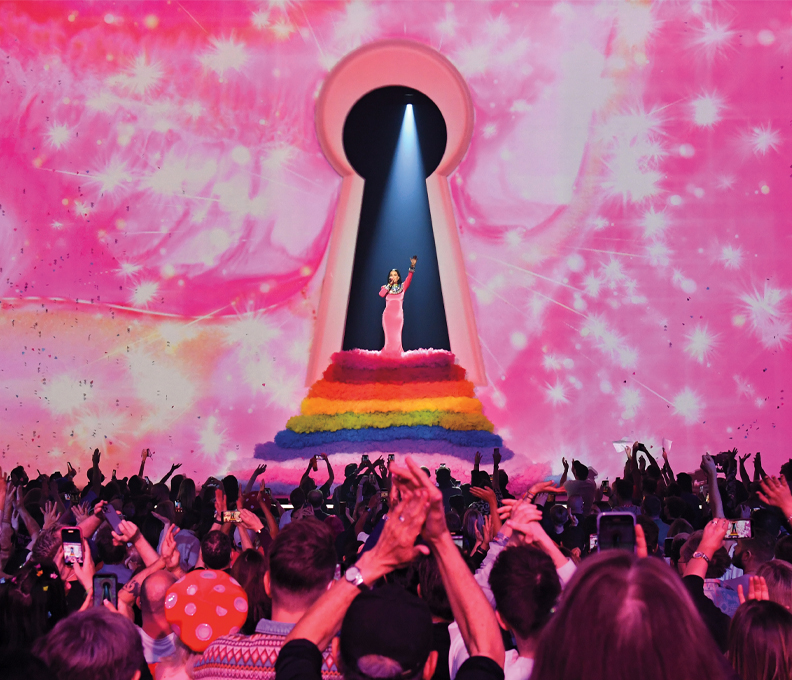
Katy Perry’s Play residency at Resorts World Theatre / Photo: John Shearer/Getty Images
The Las Vegas residency show is not a new phenomenon. In fact, its origins trace back almost eight decades to 1944, when Liberace debuted in The Ramona Room at the Hotel Last Frontier, where he’d been hired for $750 a week. Following the wildly positive response on opening night, the Last Frontier’s entertainment director, Maxine Lewis, famously called the 25-year-old pianist to her office, where she canceled the old contract and presented him with a new one for $1,500 a week (raised a couple of years later to $2,000 a week). Adjusted for inflation, that’s nearly $26,000 per week.
“Entertainment has always been a part of Las Vegas,” explains historian, author and UNLV professor David Schwartz, “going back to the ’40s, ’50s and especially the ’60s. Since they all offered pretty much the same games, the casinos really used entertainment to differentiate themselves.”
In 1952, Jack Entratter, the former managing partner of New York’s Copacabana nightclub, became the manager of the newly opened Las Vegas Sands, where he designed the Copa Room with the intent of hosting the cream of the entertainment crop. The following season, Frank Sinatra made his debut at the Sands, where he would perform a few times each year. In 1960, during the filming of Ocean’s 11, the film’s stars—Sinatra, Sammy Davis, Jr., Dean Martin, Joey Bishop and Peter Lawford—appeared together at the Copa Room in performances billed as the Summit at the Sands, which became the unofficial launch of what we know as the Rat Pack.

Peter Lawford, Frank Sinatra, Dean Martin, Sammy Davis, Jr., Las Vegas Sands manager Jack Entratter and Joey Bishop with Copa Girls at a rehearsal in the Copa Room at the Sands, 1960 / Photo: Courtesy of LVCVA Archive
According to UNLV associate professor Michael Green, this was all part of a strategic gambit by Entratter to lure high rollers to the casino. They’d been hired based on “whether they brought in the big players. Some big-name entertainers flopped. These guys brought in the whales.”
Then, in 1969, Kirk Kerkorian opened the International Hotel, where entertainment director Bill Miller signed Barbra Streisand to perform for one month in the 1,600-seat Showroom Internationale for $1 million, while Peggy Lee performed for two years in the 500-seat Casino Theatre, also for $1 million. And then along came Elvis. Immediately following Streisand’s run, Miller booked Elvis Presley to perform 57 shows over four weeks. The next day—after an opening night during which Presley received three standing ovations from the 2,200-person audience—Miller finished negotiations with Colonel Tom Parker. The resulting five-year contract found the King performing at the International for two months each year for an annual $1 million (roughly $8.2 million today). During his residency, Presley performed 636 sold-out shows.
In 1972, 28 years after his debut at the Lost Frontier, Liberace signed his now historic contract with the Las Vegas Hilton (formerly the International). He received a whopping $300,000 a week to appear 16 weeks each year—more than $1.5 million a week in 2023 dollars, making him officially the highest paid entertainer in town. Many refer to this era, from 1944 to 1972, as the Golden Age of Las Vegas.
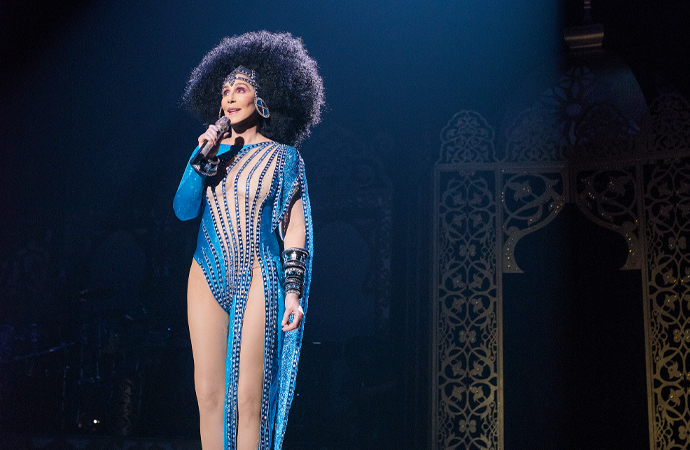
Cher’s Classic Cher show at Park MGM, 2017 / Photo: Courtesy of Macfly Corp
Then, for the next few decades, Las Vegas became something of an entertainment wasteland. Cher once referred to the city as “an elephant graveyard where talent goes to die,” a stigma that remained for some time. Illusionists Siegfried & Roy ushered in the age of the grand spectacle, followed by prestidigitators as Lance Burton and David Copperfield, which evolved into the Cirque du Soleilification of Las Vegas Boulevard (at its peak, eight Cirque shows were running concurrently on the Strip). But while all of this was going on, a gentleman named René Angélil came up with an idea—centered around his wife, Celine Dion—that would completely shift the paradigm.
Angélil conceived Dion’s A New Day… residency for Caesars Palace, which built the 4,000-seat Colosseum for the event. Debuting in 2003, it not only restored luster to the residency artist in Las Vegas but also married the experience with Cirque’s awe-inspiring visuals by enlisting Franco Dragone, who had directed Mystère and O. “This was René’s genius,” says John Nelson, senior vice president of AEG Live. “He put them together and created something larger than life, thereby initiating the new era of resident stars. And it had to be bigger, as these new theaters held four or five times more people than the theaters at the Frontier or the Sands. Everybody thought it was crazy because singers establishing a residency in Las Vegas was very much a thing of the past, but René reestablished that with Celine. And then we did it a second time, with Elton John.”
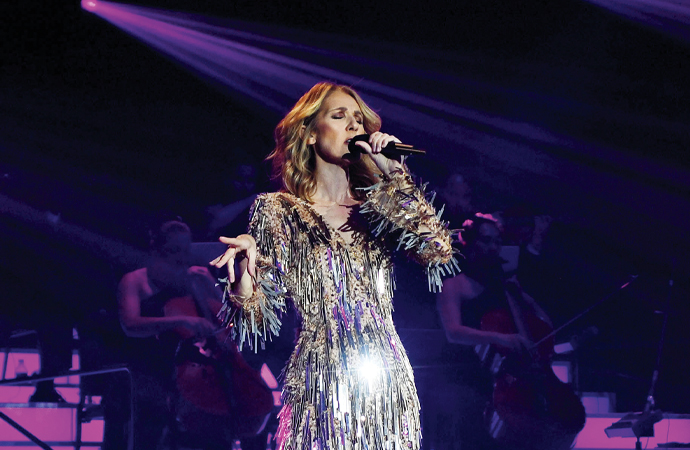
Celine Dion’s self-titled residency at The Colosseum at Caesars Palace, 2017 / Photo: Courtesy of Denise Truscello
The name A New Day… would be prophetic, as the show ushered in a new era on the Strip. A New Day… and John’s The Red Piano would be joined in The Colosseum by Bette Midler’s The Showgirl Must Go On and Cher, whose star had obviously changed her mind about the town. Then came Rod Stewart: The Hits, and later Mariah Carey, first with All I Want for Christmas Is You: A Night of Joy and Festivity, then #1 to Infinity, and most recently The Butterfly Returns. But the Strip was about to see another shift in the residency model.
While these performances were major successes, all were aimed at an audience of Baby Boomers and Gen Xers. It would take Britney Spears to signal that the millennial market had moved to the demographic bull’s-eye for ticket sales. This younger generation would plan trips to Las Vegas to see a concert and then raise the roof in a nightclub while dancing to their favorite EDM artist, often ignoring the casino altogether. Debuting in 2013, Spears’ Britney: Piece of Me residency would occur not at The Colosseum but rather at Planet Hollywood’s Axis auditorium, which had undergone a $20 million redesign in preparation for the event (it is now named the Bakkt Theater).
The show was so successful—and so adept at moving the needle—that Planet Hollywood quickly found itself in the residency business. Now a new demographic of artists was coming to Las Vegas for a residency, beginning with Pitbull’s Time of Our Lives, Jennifer Lopez: All I Have, Backstreet Boys: Larger Than Life, Gwen Stefani—Just a Girl and Christina Aguilera’s The Xperience.
MGM Resorts International got into the residency game in 2016 with Bruno Mars at Park MGM and Ricky Martin’s All In. Then came Lady Gaga, who may not have shifted the paradigm with her Lady Gaga Enigma + Jazz & Piano residency, but definitely legitimized the form by elevating the level of artistry to such a point that it would be fruitless for anyone to deny that Las Vegas residencies are now where the very best of the best come, and where fans from across the globe travel to see them. Closing out the decade in the Park Theater were Aerosmith’s Deuces Are Wild and Janet Jackson’s Metamorphosis.
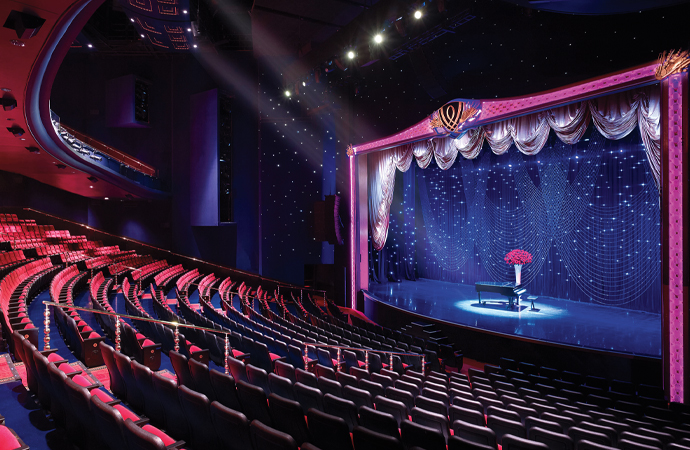
Encore Theater at Wynn Las Vegas / Photo: Courtesy of Barbara Kraft
Following Covid, the artists being booked for residencies continued skewing toward younger audiences, with a few notable exceptions such as Cher at Park MGM, and Diana Ross and Lionel Richie, who now both perform (though regrettably, not together) in the Encore Theater at Wynn Las Vegas, the highest-grossing theater on the planet with a capacity fewer than 2,000 people. Says Richie, “Playing in the Encore Theater at Wynn allows me to interact with my fans from all over the world. The atmosphere in that intimate venue and the love that I receive while playing there is like no other.” This fresh wave of artists and residencies has come to include Usher, Adele, Mars and Anderson.Paak, Maroon 5, Kelly Clarkson and Katy Perry.
Maroon 5’s Adam Levine says about the band’s residency, “Our fans get something so different from what we’ve ever done. They get a more intimate look at who we are as a band and where we’ve come from, making it a more relatable experience.”
The consistency of the experience appeals to Perry: “With my Vegas residency, Play, I can put on a show that I could never truck around the country. I get to be in the same venue night after night, with larger-than-life props on a stage with the latest and greatest in technology. People make a real event out of going, and I get to be a part of their weekend-long life celebrations in a more intimate and interactive way.” (All three judges on the most recent iteration of American Idol are current Las Vegas residency artists, with Richie at Wynn Las Vegas and both Perry and Luke Bryan at Resorts World Las Vegas.)

Lionel Richie’s King of Hearts show at the Encore Theater at Wynn Las Vegas / Photo: Courtesy of Erik Kabik
Meanwhile, in the lead-up to her current residency, Clarkson gushed about the opportunity, saying, “I couldn’t think of a better place to get onstage than Las Vegas, because the crowds there are such an amazing collection of people who simply want to have a great time. So many of my musical idols had incredible residencies on the Strip, and I’m excited to create my own.”
Another shift would come in the form of country artists with residencies. Garth Brooks got the ball rolling at Wynn Las Vegas in 2009, and the trend gathered momentum with Shania Twain, Reba McEntire and Brooks & Dunn. These country greats laid the groundwork for the likes of Miranda Lambert, Carrie Underwood and Bryan. Of course, now that Brooks has come full circle and returned to the Strip at Caesars Palace, country music’s impact on Las Vegas is indisputable.
“It’s exciting that we’ve moved so heavily into country recently,” says Jason Gastwirth, president of entertainment at Caesars Entertainment. “It’s such a popular form of music and these artists are so approachable.”
The most awarded artist in the history of the Academy of Country Music, Lambert continues to pack the Bakkt Theater with her Velvet Rodeo residency. “We’ve been dreaming up this show for so long to make it special for the fans and celebrate all the music we’ve enjoyed together. It feels amazing to finally take everything we’ve rehearsed and share it with that room full of people, making Vegas our own supersized honky-tonk.”
Lori Nelson-Kraft, senior VP of communications at the Las Vegas Convention and Visitors Authority, says visitor spending on entertainment last year more than tripled that of the previous year, at roughly $117 per person, with 11 million people seeing a show and three million taking in a headliner’s act. All this combined to total more than $1.3 billion spent on shows and entertainment.
And like those showgoers, residencies come in all shapes and sizes. So, in addition to artists selling out the 4,700-seat Resorts World Theatre or the 5,200-seat Dolby Live, there are more intimate rooms, such as the 780-seat Flamingo Showroom at Flamingo Las Vegas, which has hosted Donny and Marie Osmond, the late Olivia Newton-John, Paula Abdul and, most recently, RuPaul’s Drag Race Live!
The most noticeable change in the residency shows of the past 20 years is that they are occurring for fewer dates over shorter runs. Of course, one cannot expect any artist—no matter the genre or generation—to deliver the number of shows with the frequency Dion did 20 years ago in A New Day…, because frankly, even she was unable to maintain that breakneck pace a second time with Celine. And due to the residency business being dominated by two companies, Live Nation and AEG Presents, the days of influence by such career-making entertainment honchos as Entratter and Miller are increasingly behind us.

